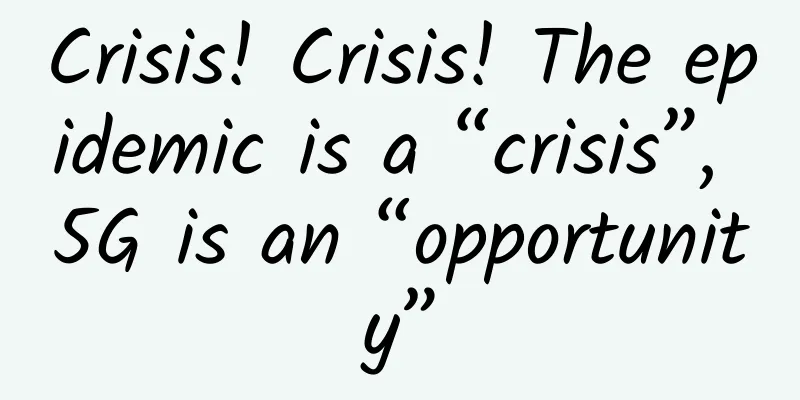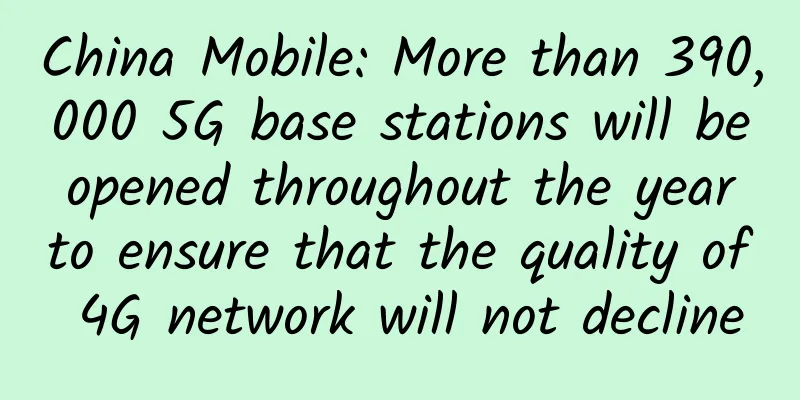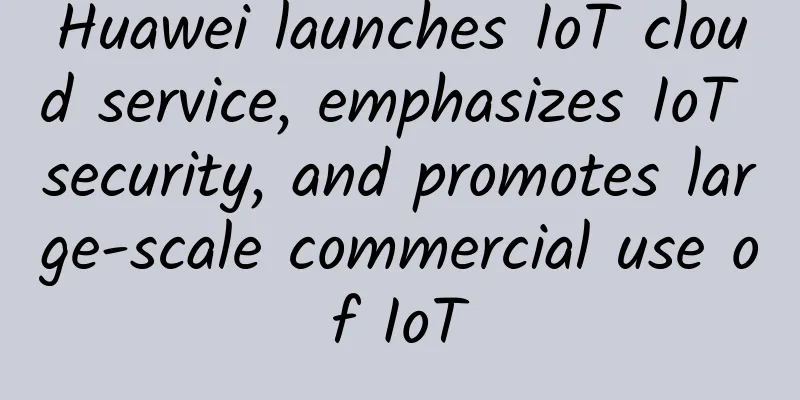|
A sudden encounter with the pneumonia epidemic requires courage and wisdom. The wisdom is to play the role of 5G and achieve smart anti-epidemic. Last year was the first year of 5G, and 2020 is the starting point of 5G's substantial development. When the epidemic came, some people speculated that it would affect the development of 5G and were pessimistic. However, I believe that fighting the epidemic will be an important opportunity for the development of China's 5G. At the same time, 5G will make important contributions to fighting the epidemic and continue to bring value to medical care and national emergency response. [[314905]] On June 6 last year, the state issued a 5G commercial license, and on October 31, the three major operators announced the official launch of the commercial network. It has only been three months since the official commercial use, and China is now in the early stages of 5G development. During this period, the most entangled issues within and outside the industry and consumers include "What is the use of 5G?", "What is the killer application of 5G?", "Why switch to 5G?" Taking the first commercial 5G mobile phone as an example, everyone jokingly calls the most commonly used application for 5G mobile phones at present "speed test software". Seeing that the speed test software can measure 1G download speed, it is still hard to think of what applications and scenarios require such a large bandwidth. This severe epidemic has created application scenarios for 5G. The severity of this epidemic, the measures taken, and the changes in society and life brought about by the corresponding measures are beyond imagination. Therefore, after the application of 5G in the scenarios created under this special situation, 5G will definitely burst out with power. The typical application scenarios of 5G in the fight against the epidemic are listed as follows: 5G application scenarios for medical care In the fight against the epidemic, using 5G to solve medical and healthcare needs is of course the first priority: - 5G telemedicine scenario: The epidemic spread rapidly from "no obvious human-to-human transmission" at the beginning to "human-to-human transmission", and some medical staff were infected in the process. When isolation measures were taken, more patients with suspected symptoms flocked to the hospital, causing secondary transmission or infection of non-real infected people. In the case of such a major infectious epidemic, the most effective solution is to minimize the gathering of people in various scenarios, decisively adopt self-isolation, community isolation, and regional isolation, and then use 5G telemedicine to conduct preliminary screening, arrange for highly suspected patients to see a doctor in order or be isolated and transported by special vehicles. When talking about 5G telemedicine before, everyone used the example of remote surgery, which is too narrow. Remote surgery is just an application of telemedicine, and it is far from mature at present and cannot be commercialized for the time being. What is more realistic and effective is to first apply 5G remote consultation, remote testing, and mobile rescue. Based on home-level 5G telemedicine, 5G transmission equipment + 5G remote consultation equipment (large screen + medical sensors, etc.) is required, or remote consultation equipment with built-in 5G communication modules. This type of scenario can be reused with daily remote medical insurance scenarios. Based on community-level 5G telemedicine, more comprehensive consultation and testing equipment will be configured in community health clinics, assisted by community medical staff when necessary.
- 5G unmanned medical scenario: Once a patient is diagnosed with an infection, he or she must be isolated and treated. Currently, isolation treatment in China still requires special nurses to provide care, while cases of robot-assisted care have already appeared abroad. We have seen that during the isolation treatment, a large number of medical staff have a heavy workload, long working hours, and a high risk of infection. 5G unmanned medical care can solve or partially solve these problems. Simple isolation medical care work, such as serving water and meals, dispensing medicines, and measuring body temperature can all be done with 5G medical robots. Configuring 5G medical smart speakers and 5G consultation and testing equipment at the patient's bedside can also reduce the workload of medical staff and reduce the chance of infection. In this major epidemic, in some areas where infected patients are concentrated, due to overcrowding in hospitals, many infected people with mild symptoms can only be isolated at home by themselves. It is even more necessary to configure 5G medical robots or 5G medical smart speakers for these infected people.
Public safety 5G application scenarios In the special period of fighting the epidemic, public safety becomes even more important. There are so many people in China, and the police and community cadres all use "human sea tactics", but this is not a long-term solution. Fighting the epidemic should be people-oriented. Problems that can be solved with technology should never be solved with people: - 5G health monitoring scenario: Although "city closure" measures have been taken in areas with severe epidemics, it is inevitable that there will be crowds flowing in public areas and communities in the city, so "temperature measurement" has become a scene that you have to face as soon as you leave your home overnight. However, as long as you go out, you have to be measured several times. The means and equipment for temperature measurement are also strange, but most of them are inefficient. In areas with a large number of people such as subway stations, it will cause crowds to gather due to temperature measurement, and you have to be measured several times in an hour on the road. 5G temperature measurement can solve this scenario very well. For example, China Unicom has launched a 5G+ thermal imaging human body temperature measurement information platform. With 5G transmission technology, the platform can transmit videos and corresponding data to large screens or cloud platforms in real time for data recording and monitoring. The advantages of this solution are simple deployment, non-contact, fast passage, and cloud big data management to reduce repeated detection within a certain period of time. Once a mass infection event occurs, it can be "traceable". China Unicom's 5G+ thermal imaging human body temperature measurement solution is being widely used in various scenarios such as subways, railway stations, hospitals, schools, governments, enterprises, commercial entities, stores, dormitories, etc. in various provinces across the country.
- 5G high-definition video surveillance: At present, various types of surveillance cameras in public areas are very common. However, when fighting the epidemic, many places and scenes need to temporarily deploy high-definition cameras to ensure isolation effects and crowd flow control. This demand requires rapid deployment, high video quality, and short-term and long-term use. At this time, 5G high-definition video surveillance has the advantages of simple wireless deployment and large bandwidth. The solution is generally a high-definition camera + 5G CPE (fixed wireless access equipment) or a high-definition camera with a built-in 5G communication module. This solution can be applied to key areas such as temporary hospitals such as Leishenshan, Huoshenshan, and exhibition hall cabin hospitals, community isolation control points, and road isolation control points.
Lifestyle and entertainment 5G application scenarios This major epidemic has given people across the country an extra-long Spring Festival holiday, and during this holiday they can only stay at home, without visiting friends or gatherings. A joke circulating online says that the "travel route" is planned as bedroom-bathroom-living room-kitchen-bedroom. It is estimated that most people watch videos, read books and play games, but after watching and playing for too long, many people can't stand it anymore. There are also people online who use WeChat video to play "guessing games" and drink with friends far away on their mobile phones. There are really all kinds of tricks. This epidemic has verified that 5G killer application scenarios will mainly appear in pan-game, pan-video, pan-XR (a general term for VR, AR and MR) and cloud-based application scenarios. These scenarios are both segmented and integrated. For example, there is a type of cloud game in pan-game, and pan-video cannot do without cloud and XR. It must be boring to just face traditional games and traditional flat videos for more than 20 consecutive days. Consumers are in urgent need of a more immersive entertainment life. Who says that games can only be "played while sitting"? With XR content and XR devices (headsets and interactive handles), you sweat more when playing a game than when playing a football game. Who says that exercise can only be boring running on a treadmill? Wearing a VR giant-screen head-mounted display device, you can enjoy the comfort of running on the seaside road in Sanya. Who says that chasing dramas can only be "silly watching"? In multi-plot interactive games, you can choose the direction of the plot yourself, and even become a character in the drama. VR technology can also be "face to face" with celebrities. These scenes are no longer imagined, and will gradually enter the homes of ordinary people, and consumers will realize the upgrade of pan-entertainment life consumption. 5G application scenarios for remote office and education During the fight against the epidemic, as long as long-term isolation is required, the demand for remote work and remote education is very strong: - 5G remote office scenario: There are many tools for remote office now, including telephone, email, OA and WeChat, but what has suddenly become popular this year is "HD video conferencing". "HD video conferencing" not only plays a very important role in the collaborative work process of fighting the epidemic, but also plays an even more important role in the remote office of governments and enterprises and institutions. In normal times, scenarios that may be solved through telephone conferences or WeChat group video chats now require professional-grade HD video conferencing because files and pictures need to be shared and discussed by multiple parties. Today's HD video conferencing is generally a hybrid conference of "optical fiber fixed communication and 5G mobile communication", professional conference room equipment + 5G CPE and personal 5G mobile phone/5G computer/5G PAD. In the work scenario of fighting the epidemic, many video conferences are required to be held at any time, and the participants are distributed in and outside the isolation area, some in the government office area, and some in temporary hospitals. At this time, the large bandwidth and rapid deployment of 5G have played a great role.
- 5G distance education scenario: distance education has a long history, from the earliest one-way distance education on TV to the current broadband two-way interactive distance education. The fight against the epidemic requires that colleges and universities, primary schools, junior high schools and high schools postpone the start of school. Beijing Foreign Studies University even postponed the return to school until May 1st. The Ministry of Education has fully launched the cloud classroom distance education plan. Although distance education does not rely on 5G, 5G can make a "qualitative" leap in distance education. Although most students may have fiber-optic broadband at home, 5G wireless coverage comes in handy in places where there is no fiber-optic broadband coverage. Although the location of students receiving distance education is relatively fixed, the teacher side may be multi-scenario, which may be in the classroom, in the science and technology museum, or in the front line of the fight against the epidemic, so the content production and transmission of the teacher side requires 5G to play a role. In addition to solving the two-way transmission of high-definition video with large bandwidth, 5G can also completely change the boring "flat" mode through VR/AR. Students can increase the interactive immersion of distance education through VR/AR equipment, and can also conduct practical exercises without being on site, which greatly reduces the difference between distance education and on-site education, and even has better results than on-site education.
The above are just some typical scenarios. More scenarios in which 5G can contribute to the fight against the epidemic are waiting for us to discover, create and realize. China's 5G development is in the first echelon of the world and is in a leading position in many fields. Now some people are worried that the epidemic will delay China's 5G development. The reason for the worry is that fighting the epidemic will affect network construction, factory equipment production, and the economy will cause a reduction in 5G investment. These concerns are certainly reasonable, but the author believes that the impact of the epidemic on China's 5G development is limited, and it may even promote the development of China's 5G in the opposite direction. The main reasons are as follows: - First, the quarantine period may affect network construction, but the construction of 5G networks will be accelerated after the quarantine period. Through the experience of fighting the epidemic, the scenarios of 5G have been "portrayed". The initial coverage of 5G should have been "hotspot areas". The so-called "hotspot areas" are places with many 5G traffic users, many scenarios, and high consumption. Accurate coverage areas can save network construction costs and achieve rapid coverage. Taking Wuhan's "Xiaotangshan Hospital" Huoshenshan Hospital and Leishenshan Hospital as examples, the three major operators achieved 5G coverage in less than two days. More than 100 million users watched the progress of hospital construction in real time 24 hours a day through the 5G network live broadcast near the hospital construction site. This is a global initiative. Under the promotion of the country, China Unicom and China Telecom's 5G networks are jointly built and shared, and the unified construction of towers saves costs and improves network construction efficiency. There is 5G network coverage wherever there is demand, so there is no need to worry about 5G network construction.
- Second, the epidemic will cause consumers to spend less offline during the quarantine period, but this impact is short-term. During the period of being affected, consumers have an urgent demand for 5G consumption. Once the epidemic is lifted, the suppressed consumption demand will be quickly released. Based on the experience of SARS and the Wenchuan earthquake, consumers' consumption outlook will be more liberated after the disaster, which is conducive to market development. Where there is demand, there will be 5G terminals and service supply. There is no need to worry that the epidemic will affect this year's 5G consumer market.
We say that China's 5G development should neither be "arrogant" nor "self-deprecating". Empty talk will ruin the country, while hard work will make it prosperous. What is more worth thinking about is how to provide better 5G services and 5G terminals to enterprises and consumers in a timely manner. Hereby, we appeal to the upstream and downstream of the 5G industry chain and relevant national departments: - Accelerate the R&D, manufacturing and commercial sales of terminals required for 5G scenarios;
- Accelerate the development and launch of typical 5G applications;
- Increase support for operators' 5G network construction, reduce electricity charges, base station rentals, tax incentives, etc., so as to accelerate 5G network coverage and service improvement;
- Coordinate the "dual guarantee" work of epidemic prevention and control and production and operation.
It is hoped that the above work, with the joint efforts of upstream and downstream enterprises in the industry chain, operators and relevant national departments, will rapidly promote the development of China's 5G and turn this epidemic into an opportunity. Terminals are the carriers of all applications and services, so we must insist on "terminals first" and quickly transform "conceptual solutions" and "PPT products" into products and services that can be supplied on a large scale. From the perspective of the 5G terminal industry chain, it is recommended to do the following two things: - First, promote the 5G terminal. There are three main ways for terminals to access 5G. The first way is that the existing smart terminal uses WiFi or network port to access the 5G network through 5G data devices (CPE, MIFI, network card, etc.). This method is easy to implement, but the device integration is low. It is the mainstream mode in the early stage of 5G; the second way is to build a 5G chip in the terminal. This method has a high technical research and development threshold and high integration. 5G smartphones are typical representatives of this method; the third way is to build a 5G communication module in the terminal to access the 5G network. This method is relatively low in technical difficulty and high in integration. It will be the most common way for terminals to 5G. At present, 5G mobile phones for ordinary consumers have been fully commercialized, and prices are rapidly popularizing from high to low. Due to the progress of 5G chip and module research and development and manufacturing, product cost performance, industrial chain integration and other reasons, the 5G of industry terminals and pan-intelligent terminals is seriously lagging behind. It is recommended that the upstream and downstream of the industrial chain strengthen cooperation, accelerate the progress of 5G chip and 5G module research and development, strengthen the integrated research and development of "terminal + module" and "terminal + chip", and improve cost performance through large-scale applications, so as to promote the 5G of terminals.
- The second is to promote the commercialization of 5G. 5G changes society, and this change is "crossing the river by feeling the stones". At present, it is in the early stage of 5G commercialization. The clarification of demand scenarios, network coverage, terminal and application supply and other links need to be pulled together end-to-end and commercialized end-to-end to meet the needs of customers and consumers. The commercialization goal should be to be able to sell on a large scale. Before the 5G era, the development of mobile Internet basically means that applications can run on the standard Internet, but the 5G era is different. To achieve the best application experience in different scenarios, it requires the coordination of "terminal, network, cloud, industry, and edge" (terminal, network, cloud computing, business applications, edge computing). Operators will play an important role as a link and platform. Under the coordination and coupling of operators, multi-industry chain cross-border cooperation will form a new 5G industrial chain ecology, thereby promoting the commercialization of 5G.
Looking back at the history of the development of China's Internet and mobile Internet in the past 20 years, each response to a "disaster" has driven a leapfrog development. The "fight against SARS" in 2003 catalyzed the rapid development of e-commerce such as online shopping, and the "Wenchuan earthquake relief" in 2008 catalyzed the rapid development of mobile Internet. There is reason to believe that the "fight against the pneumonia epidemic" in 2020 will surely catalyze 5G to profoundly change society, and 5G will also help to achieve a complete victory in the fight against the epidemic! |





![[Black Friday] SpartanHost Dallas VPS 50% off, optional AMD or E5 series, 10Gbps bandwidth, high-security VPS](/upload/images/67cabccb63bd4.webp)




